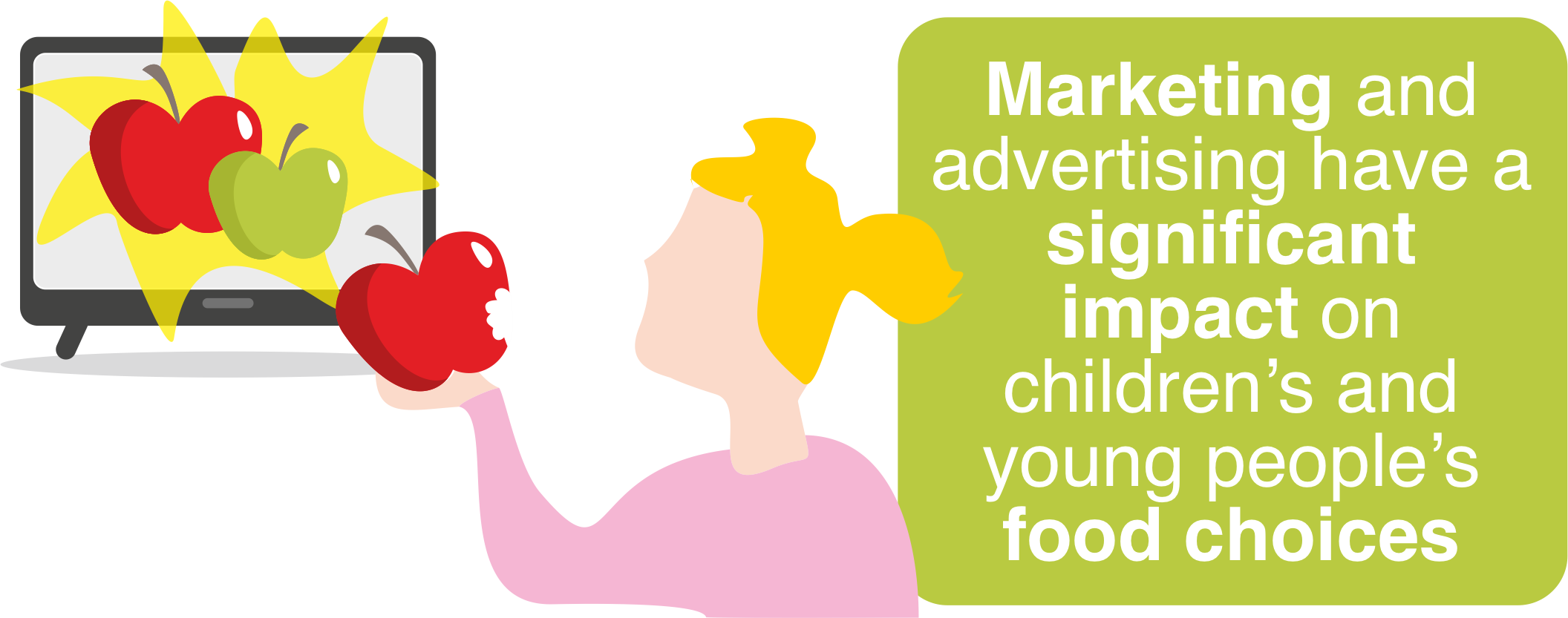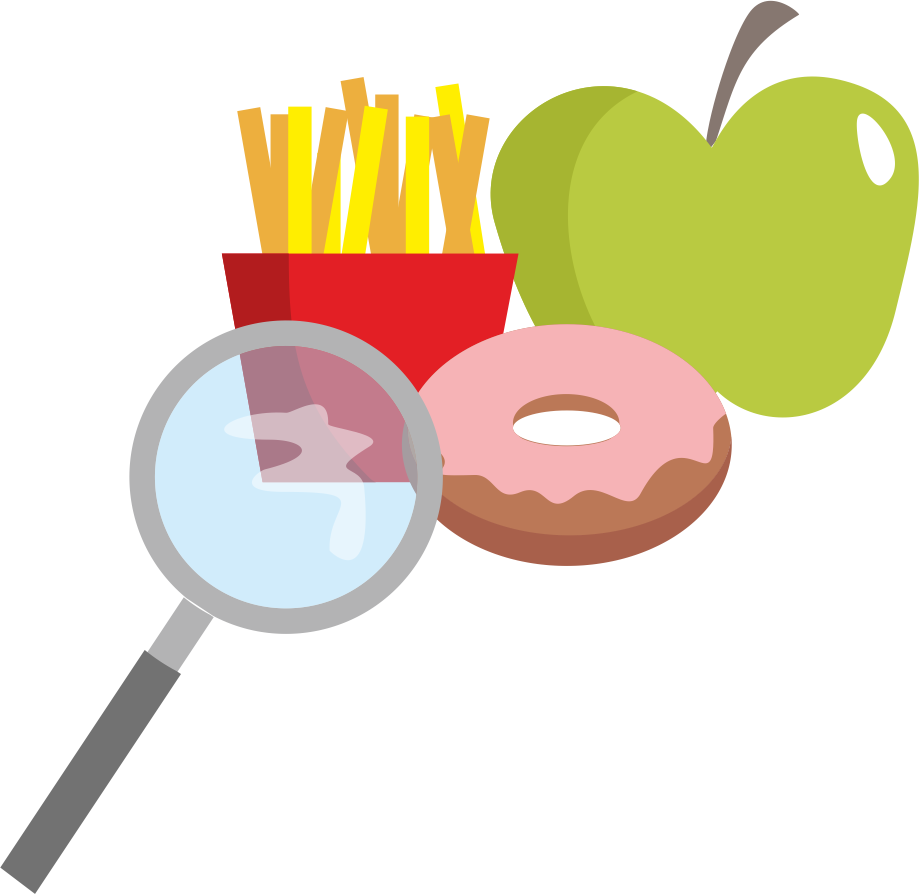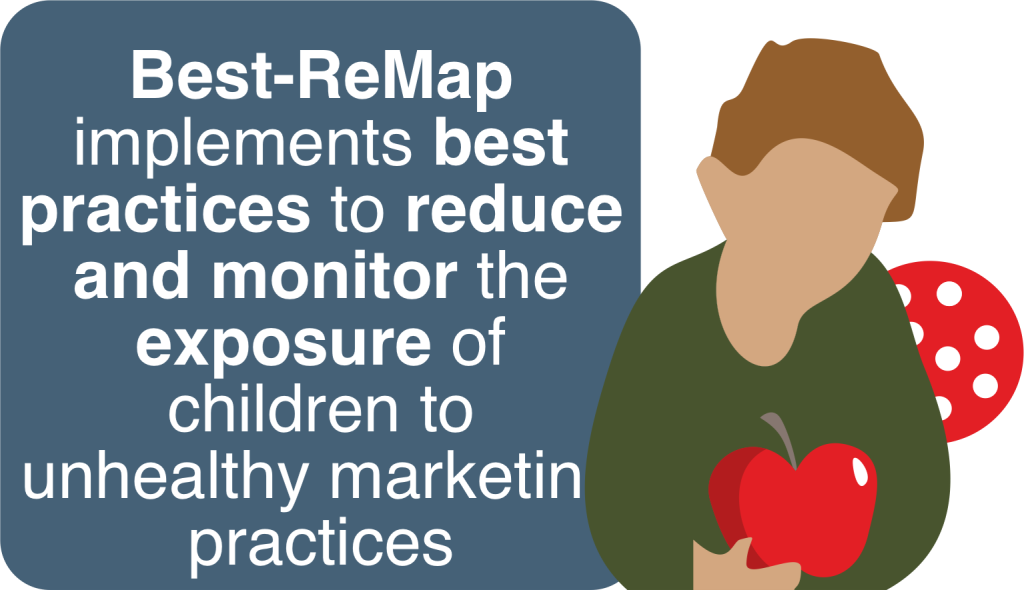Reducing the marketing of unhealthy foods to children
Children are constantly exposed to marketing messages both offline and online. The information they receive affects their food choices.
The Best-ReMaP project reached new milestones to take forward further marketing and advertising restrictions across the EU – especially in the digital world – to help achieve a reduction in childhood obesity.
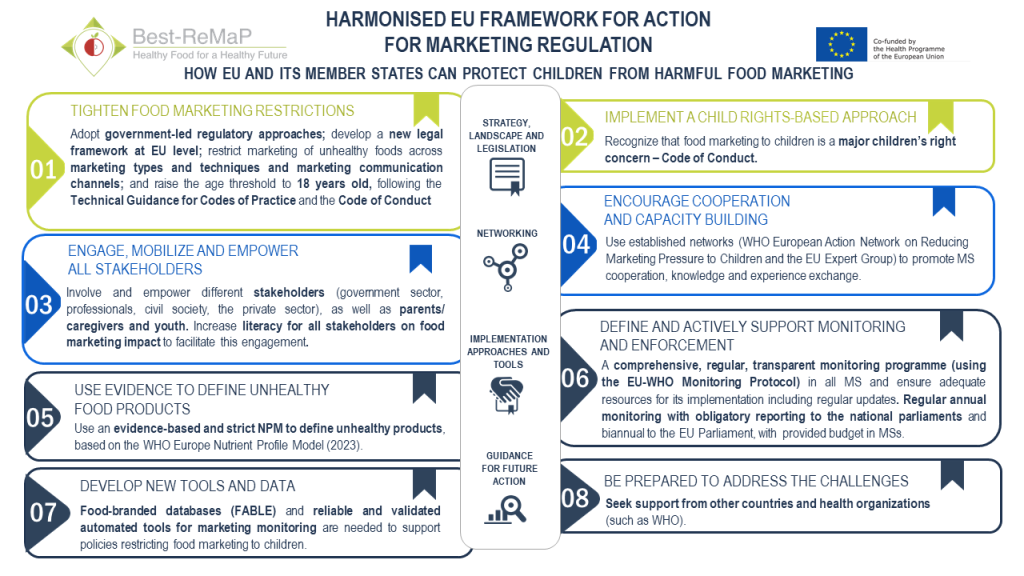
Restricting marketing of unhealty foods
Harmonised EU nutrient profile model
To support the implementation of the revised Audiovisual Media Services Directive, this harmonised EU nutrient profile model is based on the WHO Europe model and identifies foods that may and may not be marketed to children. See the report here.
Guidance on Codes of practice
Restriction of marketing of foods and non-alcoholic beverages that promote unhealthy dietary habits to children and adolescent is an area of urgent action. This guide on codes of practice is based on the regulatory codes of some Member States, on international good practices, and also builds on the checklist of the Joint Research Centre toolkit. See the report here.
Monitoring marketing of unhealthy foods to children
This review provides key definitions and introduces monitoring methods for marketing control. It describes and compares four identified existing protocols (WHO, WHO-CLICK, INFORMAS, Nordic) for scope, topics, and techniques; outlines gaps and challenges; and provides interim recommendations for the proposed EU-wide Marketing Monitoring Protocol.
The report is available here
An EU Framework for Action on marketing restriction
This EU Framework for Action provides guidance for policy implementation measures across the EU Member States. (Report D6.4 is foreseen in September 2023)
A regular update of this Framework is planned following the end of this Joint Action through a high-level EU expert platform on nutrition to facilitate the sustainability of its results.
Harmonised EU Marketing Monitoring Protocol
Some countries, regions or projects have already developed protocols to monitor unhealthy food marketing to children. These include the Nordic monitoring protocol, the INFORMAS approach and the WHO CLICK Monitoring framework. This EU Marketing Monitoring Protocol reviews the existing tools and offers a comprehensive EU approach for monitoring the marketing of unhealthy food to children. The report will be available soon here.
Our vision
As eating habits are formed at an early age, getting the right nutrition information will give children a better chance to grow up to be healthy adults.
Our activities
- identified, developed and shared best policy practices to reduce exposure of children to the marketing of unhealthy foods;
- developed harmonised protocols and tools to monitor the extent and nature of marketing exposure of children;
- supported Member States with the implementation of the new EU rules on audiovisual media services.
Why act?
Our knowledge-base
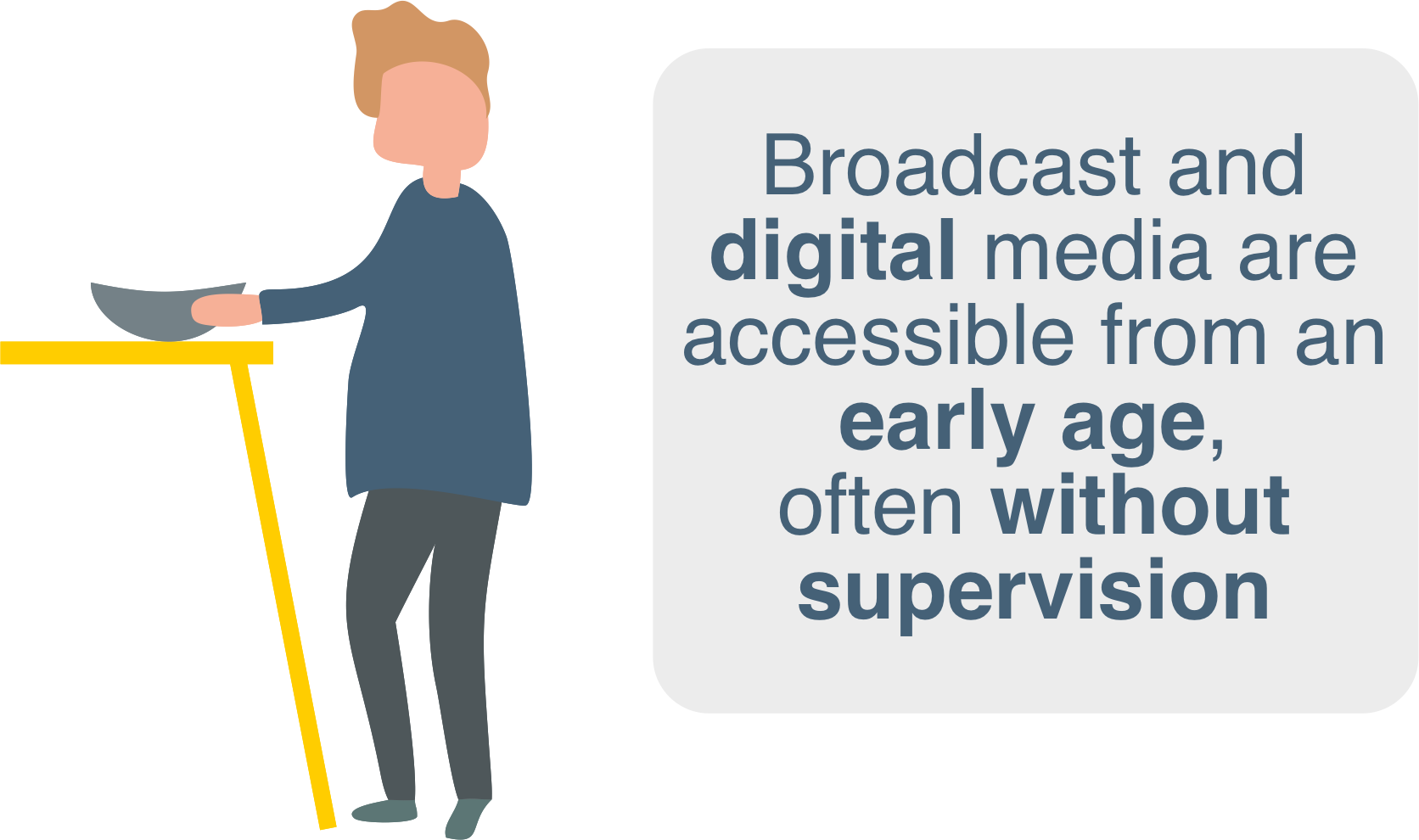

A multinational research network, EU Kids Online regularly maps children’s and parent’s experiences of the internet. Their latest EU Kids Online 2020 report includes new findings from 19 countries. Click here to read more.
Children and adolescents’ are very much exposed to food and beverage marketing in social media apps as well. This study shows to what extent.
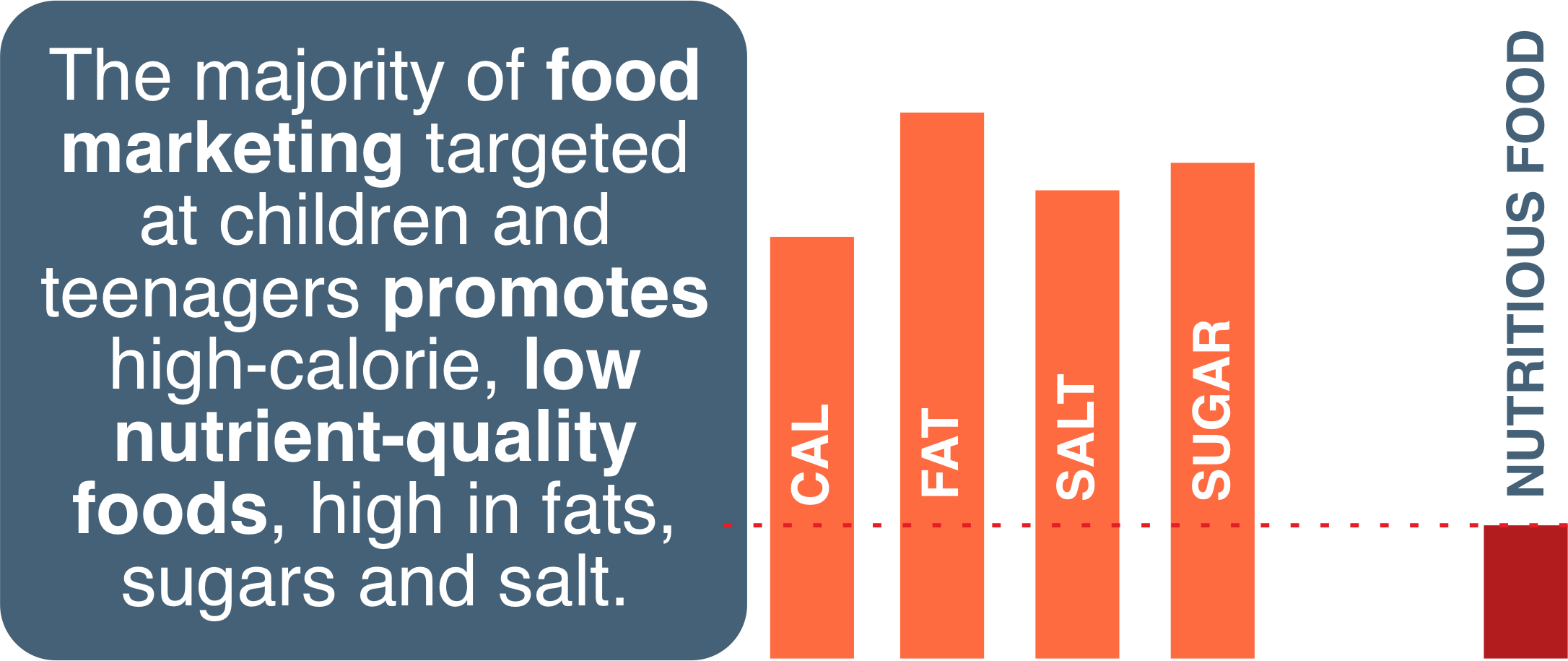
An Exploratory Study examines the ratio of healthy and unhealthy food and beverage cues featured in YouTube videos of social media influencers popular with children. Click here to read more.
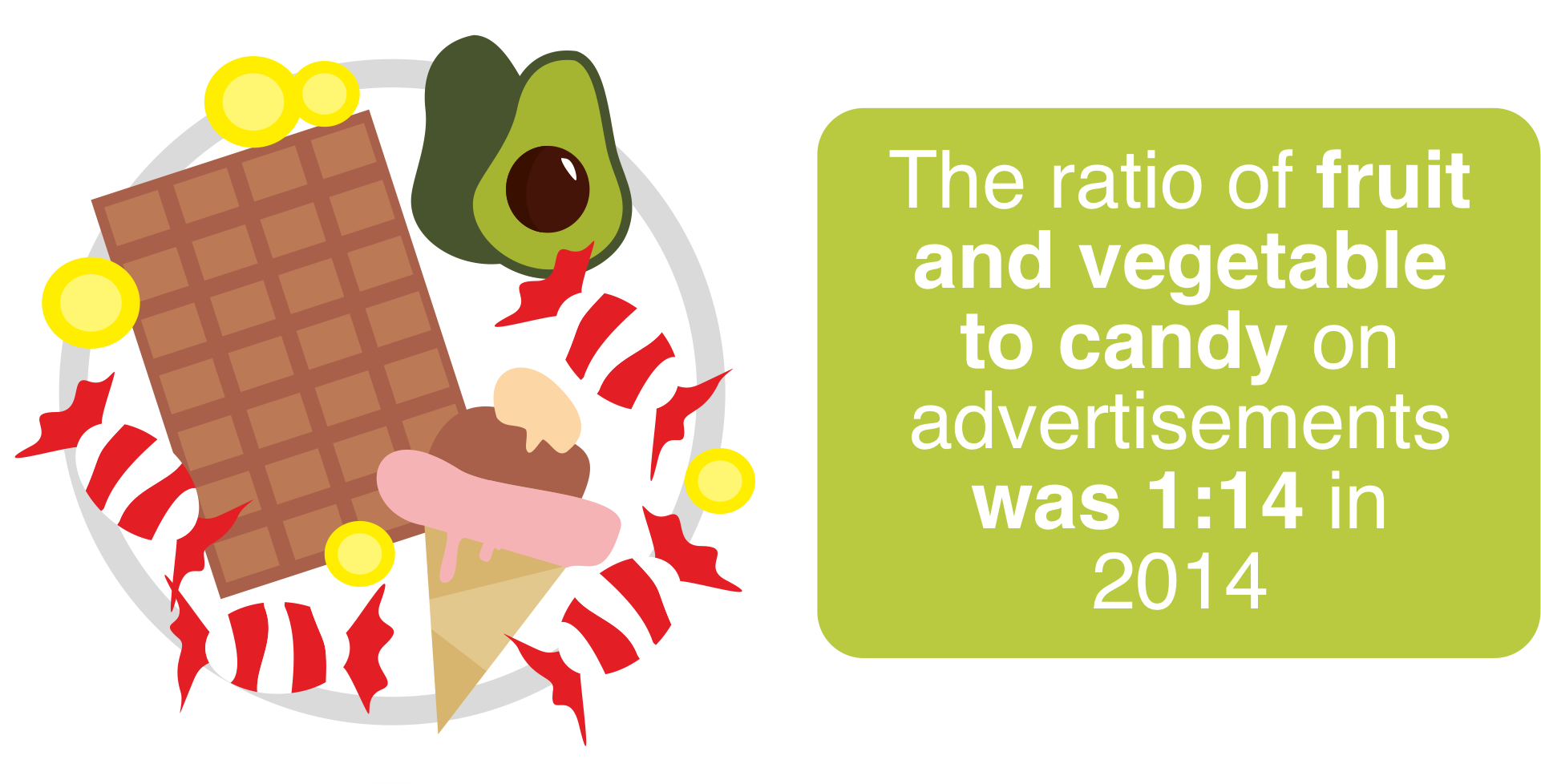
A report on food-related TV ads viewed by children and adolescents between 2002 and 2017 shows well the high exposure of our youngsters to unhealthy food marketing activities. Click here to read more.
A study based on data from 22 countries presents a global overview of children’s television advertising exposure to healthy and unhealthy products. Click here to read more.
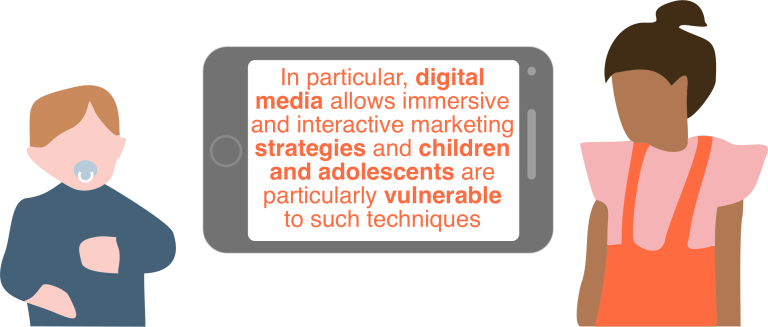
A recent publication of WHO Europe provides up-to-date information on the marketing of foods and non-alcoholic beverages to children and the changes that have occurred in recent years. Click here to read more.
A new media but same old tricks – a study examines the potential impact of food marketing to children in the digital age. Click here to read more.
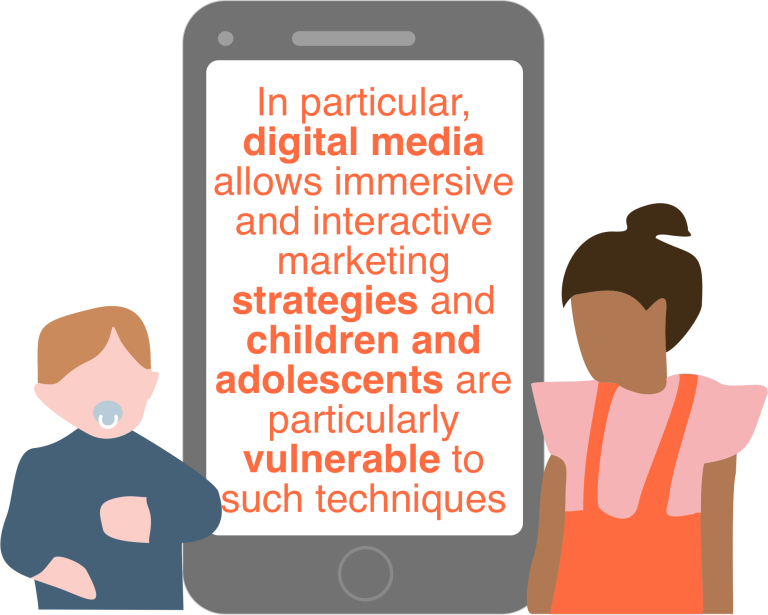
A recent publication of WHO Europe provides up-to-date information on the marketing of foods and non-alcoholic beverages to children and the changes that have occurred in recent years. Click here to read more.
A new media but same old tricks – a study examines the potential impact of food marketing to children in the digital age. Click here to read more.

How the EU regulates food marketing to children?
The European Union adopted the Audiovisual Media Services Directive at the end of 2018 to coordinate national legislation on all audiovisual media. One of the main goals of the directive is the protection of children and consumers. The implementation of this Directive is underway in the Member States.

What is nutrient profiling?
Nutrient profiling is “the science of classifying or ranking foods according to their nutritional composition for reasons related to preventing disease and promoting health”. WHO Europe has already developed a Nutritient profile model to help countries identifying foods that may or may not be marketed to children, which is a critical tool for the implementation of restrictions.

Toolkit of the Joint Research Centre
In order to support EU Member States in the area of marketing codes of conducts, the EU Science Hub, the Joint Research Centre (JRC) adopted a guidance based on a thorough analysis of statutory, co- and self-regulatory marketing codes that are in place in the EU and beyond. To inspire future codes, it is given in the form of an inventory of specific actions extracted and adapted from these codes.

How the EU regulates food marketing to children?
The European Union adopted the Audiovisual Media Services Directive at the end of 2018 to coordinate national legislation on all audiovisual media. One of the main goals of the directive is the protection of children and consumers. The implementation of this Directive is underway in the Member States.

What is nutrient profiling?
Nutrient profiling is “the science of classifying or ranking foods according to their nutritional composition for reasons related to preventing disease and promoting health”. WHO Europe has already developed a Nutrient profile model to help countries identifying foods that may or may not be marketed to children, which is a critical tool for the implementation of restrictions.

Toolkit of the Joint Research Centre
In order to support the EU Member States in the area of marketing codes of conduct, the EU Science Hub, the Joint Research Centre (JRC) adopted guidance based on a thorough analysis of statutory, co- and self-regulatory marketing codes that are in place in the EU and beyond. To inspire future codes, it is given in the form of an inventory of specific actions extracted and adapted from these codes.
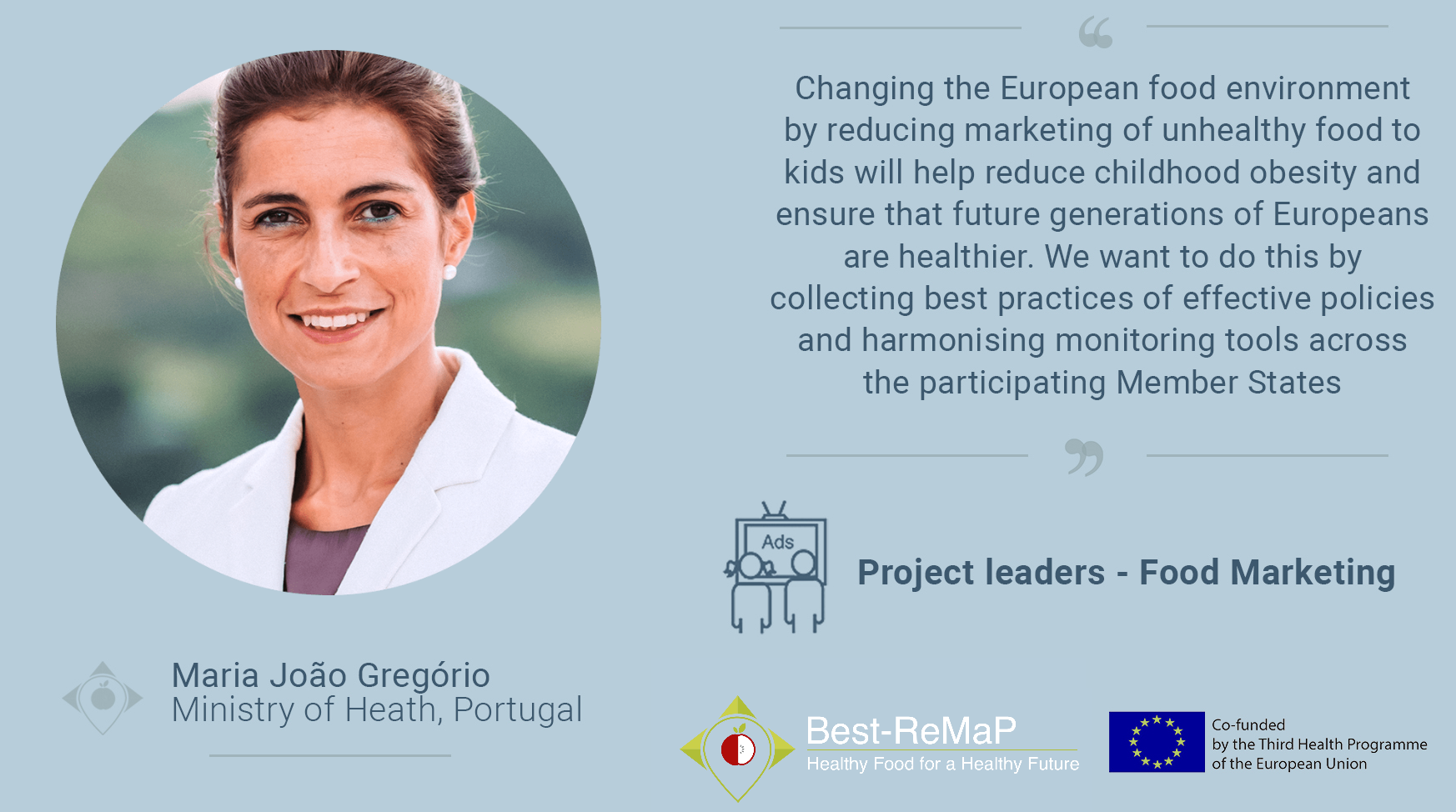

The content of this website represents the views of the author only and is his/her sole responsibility; it cannot be considered to reflect the views of the European Commission and/or the European Health and Digital Executive Agency (HaDEA) or any other body of the European Union. The European Commission and the Agency do not accept any responsibility for use that may be made of the information it contains.


